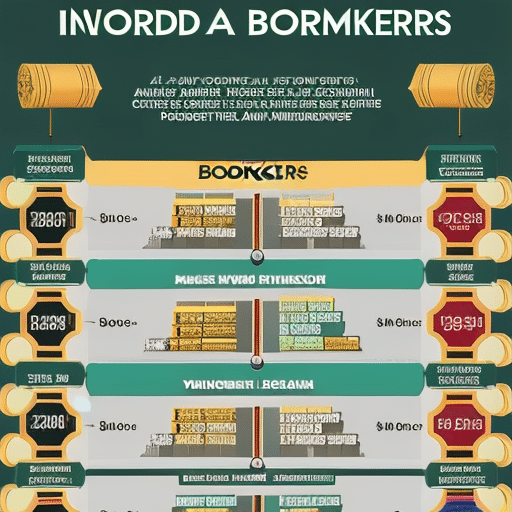Master Crypto Patterns for Profitable Trading
Did you know trading patterns like Support and Resistance breakout have over 75% success rates1? In the fast-paced crypto trading world, using well-known patterns can greatly improve your trades. Tools such as TradingView, Coinigy, and CryptoCompare help traders analyze the market fully.
By learning these patterns, you can predict price changes, spot when trends might flip, and improve your trading strategies. This knowledge leads to smarter, more successful trading choices.
Key Takeaways
- Recognizing chart patterns like Head and Shoulders, Double Tops, and Double Bottoms can signal significant trend reversals2.
- Utilize tools such as TradingView, Coinigy, and CryptoCompare for effective pattern identification.
- Understanding triangles, a common chart pattern, helps predict major price movements in the crypto market3.
- Employ technical analysis tools like trend lines and volume indicators to make better trading decisions.
- Leveraging chart patterns can significantly enhance your cryptocurrency trading signals and crypto price predictions.
- Patterns developing over longer periods on daily charts are expected to result in larger moves upon breakout1.
Introduction to Crypto Patterns
Crypto patterns are clues on price charts that show the fight between buyers and sellers. They help traders guess where the market will go next. You can find these patterns in different timelines like during the day, daily, or weekly, fitting all trading styles4. Let’s dive into why these patterns matter so much for trading success in the crypto world.
What Are Crypto Patterns?
Crypto patterns are shapes on price charts from buying and selling activities. There are many kinds, like continuation, reversal, and neutral patterns4. For example, flags and pennants mean the market might keep going the same way after a short pause. But, the head and shoulders pattern hints at a possible market turn4. Recognizing these patterns helps traders guess future prices better5.
Importance in Technical Analysis
Knowing crypto patterns is key for technical analysis in crypto trading. This analysis looks at trading volume and chart patterns to predict where prices might head6. Adding in tools like moving averages or RSI makes trading choices stronger4. Being able to read patterns and indicators offers deep insights into market mood and possible price changes6. Checking volume alongside these patterns also increases their trustworthiness4.
Why Learn Crypto Patterns?
Understanding crypto patterns is vital for traders wanting to predict market moves and spot trend changes4. Patterns such as the head and shoulders are great for spotting pivotal points in the market4. Trading with these patterns could boost your trades’ success compared to other methods5. Shapes like rectangles, triangles, and the cup-and-handle offer clear clues for building solid trading plans5.
Technical analysts often stress how crucial these patterns are for smart trading choices.
Understanding Chart Patterns in Digital Assets
Chart patterns play a key role for traders in the crypto market. They help spot great chances to make money. By learning and using these patterns, you can better predict where the market is heading. This allows for smarter trading decisions.
Common Types of Chart Patterns
There are several chart patterns you’ll often see when trading digital assets. Each pattern gives special clues:
- Ascending Triangle: This is a positive sign, suggesting it’s time to buy. It happens when prices move up and down in a narrowing path7.
- Descending Triangle: This one hints at a time to sell. It shows when prices are trending downward, again in a narrowing path7.
- Symmetrical Triangle: Found at trend ends, this can mean a market turn, either up or down. It’s seen when prices zigzag in a pinpointing pattern7.
- Rising Wedge: A sign of a potential drop, it’s marked by fluctuating price levels, showing a narrowing upwards trend7.
- Falling Wedge: This suggests an upcoming rise, with price movements creating a narrowing downward slope. It’s a cue to consider buying7.
- Rectangle Chart: Indicates a pause in market movement, with prices moving sideways. It hints at a possible break in trend direction7.
- Double Top: Shows two high points and is a signal that prices might drop. It’s a pattern traders watch closely8.
- Head and Shoulders: With three high points, this is a strong signal of market direction change. It’s highly regarded by traders8.
Historical Performance of Patterns
The history of chart patterns can tell us a lot about future prices. These patterns can last for quite a while. They help traders understand if a trend will keep going or change direction. For example, a bullish rectangle, showing price moves between certain levels, often means prices will rise soon7.
By looking back at these patterns, you can get better at finding the best times to trade. This way, you can grab market chances more quickly.
The Role of Trend Lines in Crypto Trading
Understanding how to use trend lines is key in crypto trading. They connect important price points, showing market behavior. support and resistance levels are revealed, which helps in planning when to buy or sell.
Support and Resistance Levels
Knowing about support and resistance levels is vital in crypto trading. Support levels show where a cryptocurrency finds enough buying interest to prevent further price drops. On the other hand, resistance levels mark where selling pressure stops the price from going higher. These points where prices often pause or reverse9 are essential in trading strategy.
Understanding them lets you predict market movements better.
Identifying Trends with Trend Lines
To spot market trends, you must know how to draw trend lines. These connect the peaks and valleys in price charts. The market trends are either moving up, down, or sideways10. An uptrend line signals increasing prices by connecting rising lows10.
A downtrend line shows falling prices by linking dropping highs10. Sideways trends indicate a market without a clear direction, showing even competition between buyers and sellers10. Using trend lines to spot breakouts can lead to great trading chances9.
For better crypto charting, mix trend line analysis with tools like MACD, RSI, and moving averages. This mix gives a fuller view of market actions9. This way, you can guess market moves more accurately and boost your trading approach.
Key Crypto Trading Patterns: Head and Shoulders
The head and shoulders pattern is a top choice for spotting trend shifts11. It features three peaks. The tallest is in the middle, called the “head,” with shorter ones on the sides, the “shoulders”11. It’s a visual clue for market changes, crucial for crypto trading tactics.
An opposite version, the inverse head and shoulders, hints at a bullish trend shift12. Spotting it brings tactical edges, letting traders predict price jumps. Both patterns’ success relies on the “neckline.” It acts as a barrier, directing the pattern’s course11.
Traders should wait for the pattern to fully form before making moves. The profit aim is the gap between the head and either shoulder’s bottom12. Stops are placed above the right shoulder after crossing the neckline, to minimize losses12.
Although reliable, newcomers may find it hard to spot this pattern and manage risks11. Yet, pros use it to seize big market moves, setting clear profit and risk levels. Mastering it demands practice and thorough analysis.
Triangles: Ascending, Descending, and Symmetrical
Triangles are important patterns in trading that predict price movements. They come in three types: ascending, descending, and symmetrical. Each one tells us different things about what might happen with prices.
Identifying Triangles
An ascending triangle forms in an uptrend. It has a flat top and a sloping bottom. This shape suggests prices might shoot up when they pass the top line with more trading happening1314. These patterns can take up to three months to fully form14.
The descending triangle appears in downtrends. It has a flat bottom and slopes down at the top. This shape means prices are likely to drop further once they fall below the bottom line1314.
Symmetrical triangles have a top line that slopes down and a bottom line that slopes up. They show a time of uncertainty in the market and can lead to a price jump in any direction. For a real breakout, look for more trading and two closes outside the line13.
Trading Strategies for Triangle Patterns
To trade ascending triangles well, wait for the price to break above the top line with a lot of trading, showing a strong upward move13. With descending triangles, consider selling when prices drop below the bottom line, indicating a falling trend14.
For symmetrical triangles, look for a break in either direction. Be sure the move is real by checking for a lot of trading and a closing price outside the line. High trading volume helps confirm which way the price will go14.
Using these triangle patterns well in your crypto trading can lead to great chances to make money. But understanding them takes practice and a deep knowledge of the market13.
Recognizing Flags and Pennants
Understanding continuation patterns like flags and pennants is crucial in crypto trading. They indicate market momentum and help make smart trading choices. These patterns usually show up during brief pauses before the market picks up its prior direction.
Characteristics of Flags and Pennants
Flags and pennants are seen as short-term patterns after a big price change. Flags have parallel lines that form a rectangle. A bull flag follows a quick rise, then consolidates with parallel lines sloping down15. On the flip side, a bear flag comes after a price drop, with lines sloping up15. Pennants have converging lines that create a small triangle. A bullish pennant appears after prices rise, showing a short pause before climbing again16. A bearish pennant shows up after a fall, hinting at a brief stop before dropping more16.
Trading Techniques for Flags and Pennants
To trade flags and pennants in crypto, spot these patterns and watch for volume changes. When these patterns form, trading volume usually drops, indicating less market activity16. For flags, look for a breakout with lots of volume, suggesting the trend will keep going16. In bull flags, the price levels out before going up again, good for starting long positions.
Bear flags indicate short position chances as prices level up then keep falling15. Pennants also break out in the trend’s direction with a volume spike16.
Using these patterns, traders set profit goals based on the initial price move’s height. For bullish and bearish pennants, expect breakouts near the pattern’s peak, with volume helping confirm the move16. Knowing these patterns can really improve trading in the fast-paced crypto market.
Wedges in Cryptocurrency Markets
In the fast-paced crypto trading world, knowing wedge patterns is key. These patterns show big market trends, offering traders important hints.
Rising and Falling Wedges
Wedge patterns look like triangles on charts and point to coming price swings. They can go up or down. A rising wedge forms in an uptrend, suggesting a drop might come17. A falling wedge hints at a price rise during downtrends18.
With falling wedges, a rise above the top line can mean a big change19.
Market Implications of Wedge Patterns
Rising and falling wedges tell us different things. Rising wedges mean the price might fall, useful for deciding when to sell17. Falling wedges suggest a price jump is likely, helping traders get ready for a possible gain19. With a 64% success rate, falling wedges are pretty reliable for predicting gains18.
These patterns last weeks to months, marked by narrowing lines. In falling wedges, both lines dip18. As they form, trade volume drops, showing the trend might change soon. Spotting them helps predict where crypto prices are heading.
Double Tops and Double Bottoms: Indicators of Reversals
Knowing when to spot reversals in crypto is key for good trading. The double top and bottom patterns are crucial for this. They help traders recognize when the market’s direction might change.
A double top pattern appears after a big uptrend. It shows two high points at almost the same level, indicating a possible end to the bullish trend20. For it to be confirmed, the price needs to fall below the low point between the peaks21. Spotting a true double top is vital to avoid making trading mistakes20. Tools like the stochastic oscillator and RSI help confirm the pattern21.
On the flip side, a double bottom pattern appears after a long downtrend. It has two low points suggesting the bearish trend might be over20. When the price rises above the midpoint high, it suggests a trend change to bullish21. Chart pattern scanners are useful for finding these patterns quickly21. Setting profit goals using the pattern’s height helps in planning exits21.
Using software for spotting these patterns makes trading more accurate and fast21. By understanding double tops and bottoms, you can trade smarter. This knowledge lets you take advantage of the market’s shifts.
Introduction to Volume and Its Importance in Crypto Patterns
Crypto volume analysis is vital in cryptocurrency trading. It helps confirm if a price movement is strong and real. Learn more here22. So, let’s explore the role of volume as a confirmatory tool and how to read volume changes correctly.
Volume as a Confirmatory Tool
Volume is key to understanding market liquidity, price discovery, and market health22. In crypto trading, volume gives insights that improve trading strategies. A high trading volume means more liquidity, which leads to a stable market and smooth trades22.
For instance, a high volume during a price move up or down proves the movement is likely to keep going23. Both bullish and bearish reversal patterns, when matched with high volume, can lead to big gains24.
Using tools like On-Balance Volume (OBV) and Money Flow Index (MFI) is crucial22. OBV shows market buying and selling pressure, and MFI tells us about incoming and outgoing money for a crypto, helping understand pressure levels22.
Interpreting Volume Movements
Reading volume with price action gives clues on market mood. For instance, more volume in an uptrend shows strong interest, while less could signal a trend change23. Volume shows how much of a crypto is traded, indicating interest or disinterest24.
A high trading volume points to a liquid market where assets are easily traded, reflecting the market’s overall condition22. Using volume indicators helps make better trading decisions and executions22. Steady volume usually means the market is stable and trustworthy22.
By studying volume with price trends, traders can spot patterns and foresee market directions22. Continuation patterns help see if trends will keep going, offering extra trading hints to maximize outcomes23.
Using Moving Averages in Crypto Pattern Analysis
Moving averages help crypto traders understand trends. They make price trends clearer by smoothing price data. This clarity assists traders in seeing if the trend is moving up or down.
Choosing between Simple Moving Average (SMA), Weighted Moving Average (WMA), and Exponential Moving Average (EMA) depends on your trading style and timeframe. The EMA updates quickly with price changes, making it useful for fast trades25. The WMA also adjusts rapidly compared to the SMA25.
Simple Moving Averages (SMA)
The SMA shows the average price over a set period. It helps signal trend direction. For quick trading, a 20-day SMA is popular, while a 200-day SMA fits long-term investment strategies26. The 50-day and 200-day averages are key indicators for many traders26.
To spot trend changes, understanding SMA is key. A bullish crossover, where a short-term SMA goes above a long-term one, suggests upward momentum26. A bearish crossover indicates a potential downtrend when a short-term SMA dips below a longer-term SMA26.
Exponential Moving Averages (EMA)
The EMA focuses more on recent prices, responding to changes swiftly. This makes it ideal for those making quick trades. Its quick response to price adjustments makes it a top choice for short-term and swing trading25. The EMA is preferred for its swift reaction to market shifts compared to the SMA25.
Lower EMAs help show short-term trends. Higher EMAs indicate long-term trends in crypto. A daily chart usually gives stronger signals than a short 15-minute one, especially when using moving averages for trading25.
Using moving averages can highlight key support and resistance levels. They’re often combined to pinpoint trading opportunities.
Here is a quick comparison:
| Type of Moving Average | Best for | Characteristics |
|---|---|---|
| SMA | Long-term trades | Smooths out price data evenly over periods |
| WMA | Intermediate, short-term trades | More dynamic, quicker reaction than SMA |
| EMA | Short-term trades, swing trading | Highly reactive, strongest indicator |
Knowing how SMA and EMA analyses differ can boost your crypto trading. By using these tools, you can better handle market volatility and make smarter choices.
Advanced Crypto Charting Techniques
For any serious crypto trader, exploring advanced charting techniques is key to improving strategies. Tools like the MACD and stochastic oscillators give deeper market insights.
MACD (Moving Average Convergence Divergence)
The MACD is a crucial crypto trading tool. It signals trend momentum and reversals. It uses two moving averages to show market shifts. Traders use the MACD to find the best times to buy or sell. It’s a treasure on platforms like TradingView, which works with major crypto exchanges27. CryptoWatch also offers the MACD among its technical indicators for a detailed trading strategy27.
Stochastic Oscillators
Stochastic oscillators tell us when the market might change by comparing closing prices over a period. They help traders spot potential market shifts. Platforms like CryptoWatch provide these indicators for a wide technical analysis27. Coinigy, too, offers varied analysis tools across many exchanges27.
Using stochastic oscillators with the MACD gives a full view of the market. This combination aids traders in making well-informed choices.
| Platform | Integration | Technical Analysis Tools |
|---|---|---|
| TradingView | Popular crypto exchanges | Three technical indicators for free accounts |
| Coinigy | Over 45 exchanges | Multiple technical analysis indicators |
| CryptoWatch | Over 800 exchanges | Various technical analysis tools |
The MACD and stochastic oscillators are key for a successful trading strategy. They provide essential metrics and forecasts, making them must-have tools for today’s crypto traders.
Crypto Patterns and Market Psychology
To understand crypto trading signals, start by seeing how market psychology shapes chart patterns. Patterns like Head and Shoulders, Double Tops and Bottoms, and Triangles show what the market feels. They reflect fear, optimism, and trends28. By grasping these emotions, traders can predict market moves and adjust their plans.
The link between crypto patterns and market psychology is key. It helps form these patterns. By studying patterns, you learn about the market’s emotional reactions—fear and greed drive many trading decisions29. A Bull Flag pattern, for example, signals a pause before a big buy, showing hesitation then confidence28.
Also, fear of missing out (FOMO) or fear of losing affects trading patterns. Traders who understand these emotions through charts gain an edge. With help from this guide, you can get better at spotting and acting on major market changes29. Learning these psychological details helps not just in finding patterns but also in leveraging future prices.








 Bitcoin
Bitcoin  Ethereum
Ethereum  Tether
Tether  XRP
XRP  Wrapped SOL
Wrapped SOL  USDC
USDC  Lido Staked Ether
Lido Staked Ether  TRON
TRON  Dogecoin
Dogecoin  Cardano
Cardano  Figure Heloc
Figure Heloc  Wrapped stETH
Wrapped stETH  Wrapped Bitcoin
Wrapped Bitcoin  WhiteBIT Coin
WhiteBIT Coin  Hyperliquid
Hyperliquid  Chainlink
Chainlink  Bitcoin Cash
Bitcoin Cash  USDS
USDS  Binance Bridged USDT (BNB Smart Chain)
Binance Bridged USDT (BNB Smart Chain)  Wrapped eETH
Wrapped eETH  Zcash
Zcash  Stellar
Stellar  Ethena USDe
Ethena USDe  LEO Token
LEO Token  Litecoin
Litecoin  Monero
Monero  Sui
Sui  Coinbase Wrapped BTC
Coinbase Wrapped BTC  Avalanche
Avalanche  WETH
WETH  Hedera
Hedera  Shiba Inu
Shiba Inu  Polkadot
Polkadot  Toncoin
Toncoin  Ethena Staked USDe
Ethena Staked USDe  Dai
Dai  Cronos
Cronos  Mantle
Mantle  Internet Computer
Internet Computer  MemeCore
MemeCore  sUSDS
sUSDS  Uniswap
Uniswap  NEAR Protocol
NEAR Protocol  USDT0
USDT0  Bittensor
Bittensor  World Liberty Financial
World Liberty Financial  Aave
Aave  USD1
USD1